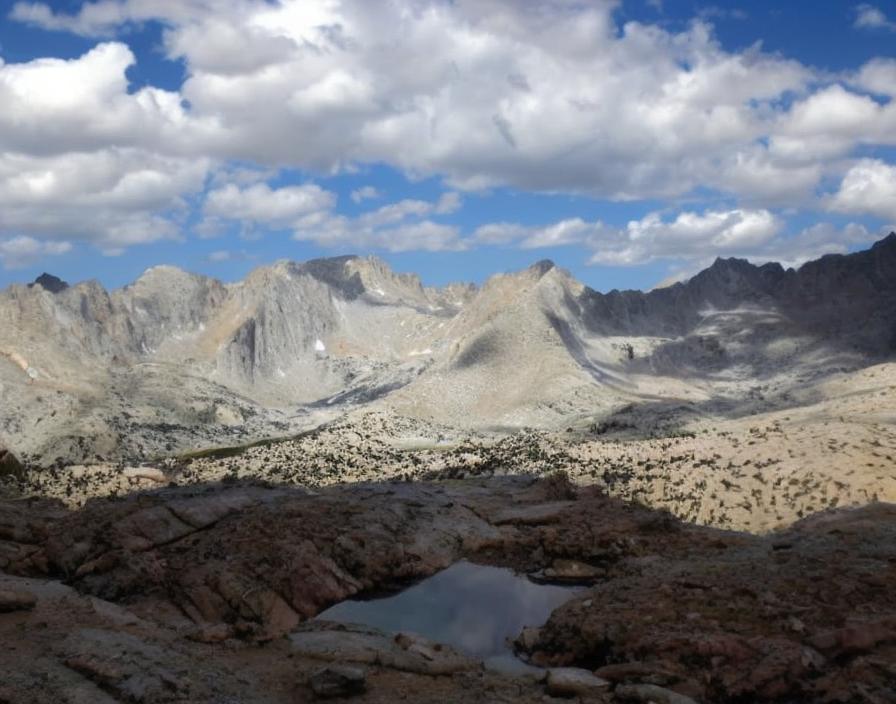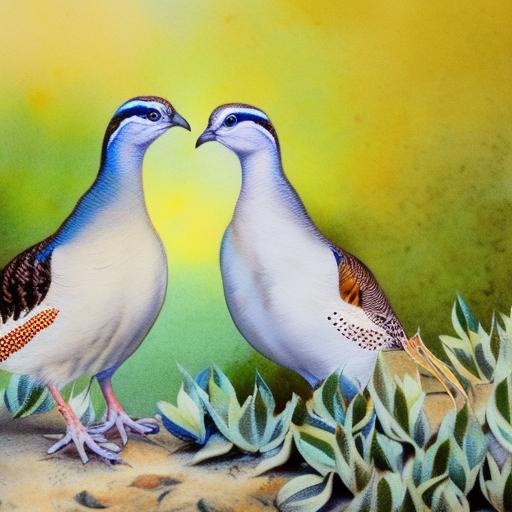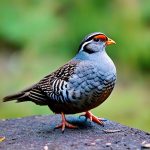Mountain quail (Oreortyx pictus) are a unique and fascinating species of bird that are native to the western United States. They are known for their striking appearance, with a distinctive crest on their head and intricate plumage that provides excellent camouflage in their natural habitat. Mountain quail are also known for their elusive nature, making them a sought-after species for bird enthusiasts and conservationists alike.
Breeding mountain quail in captivity has become increasingly popular in recent years, as efforts to conserve and protect this species have gained momentum. Breeding mountain quail in captivity not only helps to ensure the survival of the species, but also provides valuable insights into their behavior, reproduction, and habitat needs. In this article, we will explore the habitat and nesting behavior of mountain quail, their reproduction and courtship behavior, as well as the challenges and threats they face in the wild. We will also discuss the conservation efforts being made to protect and preserve mountain quail breeding populations.
Key Takeaways
- Mountain quail are known for their unique breeding behavior and are found in the western United States.
- They prefer dense, brushy habitats for nesting and are known to build their nests on the ground.
- Mountain quail reproduce through a complex courtship behavior involving vocalizations and displays.
- The incubation period for mountain quail eggs is around 23 days, and the chicks are precocial, meaning they are able to feed themselves shortly after hatching.
- Conservation efforts for mountain quail breeding focus on preserving their natural habitat and managing threats such as habitat loss and predation.
Habitat and Nesting Behavior of Mountain Quail
Mountain quail are typically found in dense, brushy habitats at higher elevations, such as chaparral, oak woodlands, and coniferous forests. They are well adapted to living in rugged terrain, and are often found in areas with steep slopes and rocky outcrops. When it comes to nesting behavior, mountain quail are known for their secretive nature. They build their nests on the ground, usually under the cover of dense vegetation or brush, which provides protection from predators and the elements.
The female mountain quail is responsible for building the nest, which is a shallow depression lined with grasses, leaves, and feathers. She will lay a clutch of 9-10 eggs on average, which she will then incubate for about 24-25 days. The male mountain quail will stand guard nearby, keeping a lookout for potential threats while the female tends to the eggs. Once the eggs hatch, the chicks are precocial, meaning they are born with their eyes open and are able to leave the nest shortly after hatching. This nesting behavior is crucial to the survival of mountain quail populations, as it allows them to raise their young in a safe and secure environment.
Reproduction and Courtship Behavior
The reproductive behavior of mountain quail is a fascinating aspect of their biology. During the breeding season, which typically occurs in the spring and early summer, male mountain quail engage in elaborate courtship displays to attract a mate. These displays often involve the males puffing out their chest feathers, fanning their tails, and calling out to potential mates with a distinctive “ka-loo” vocalization. These displays are not only visually striking, but also serve as a way for males to establish dominance and attract females.
Once a pair has formed, the male will continue to court the female by offering her food and performing various displays to demonstrate his fitness as a mate. The female will then choose a suitable nesting site and begin building the nest, while the male stands guard and defends the territory from potential threats. This courtship behavior is essential for successful reproduction in mountain quail, as it ensures that strong and healthy pairs are able to produce offspring and contribute to the overall population.
Incubation and Hatching of Mountain Quail Eggs
After the female mountain quail has laid her clutch of eggs, she will begin the incubation process, which typically lasts for about 24-25 days. During this time, she will diligently tend to the eggs, keeping them warm and protected from predators. The male will continue to stand guard nearby, keeping watch over the nest and alerting the female to any potential dangers.
As the incubation period nears its end, the female will become more vocal and restless, signaling that the eggs are about to hatch. Once the chicks begin to emerge from their shells, they are greeted by their attentive parents, who will help them out of the nest and lead them to safety. The hatching of mountain quail eggs is a critical stage in their reproductive cycle, as it marks the beginning of a new generation and ensures the continuation of the species.
Caring for Mountain Quail Chicks
After the mountain quail chicks have hatched, both parents play an active role in caring for their young. The chicks are precocial, meaning they are able to walk, feed themselves, and follow their parents shortly after hatching. The parents will lead the chicks to areas with abundant food and cover, teaching them how to forage for seeds, insects, and other small invertebrates.
The parents also provide protection for the chicks, using their camouflage and vigilance to keep them safe from predators such as hawks, foxes, and snakes. As the chicks grow and develop, they will gradually become more independent, but will continue to rely on their parents for guidance and protection until they are fully fledged. Caring for mountain quail chicks is a demanding but rewarding process for the parents, as it ensures the survival of their offspring and contributes to the overall health of the population.
Challenges and Threats to Mountain Quail Breeding

Despite their remarkable adaptability and resilience, mountain quail face a number of challenges and threats to their breeding success in the wild. Habitat loss and fragmentation due to urban development, agriculture, and logging have significantly reduced suitable nesting sites for mountain quail. This loss of habitat not only limits their ability to find suitable nesting sites but also exposes them to increased predation and competition from other species.
In addition to habitat loss, mountain quail are also vulnerable to predation by introduced species such as feral cats, foxes, and raccoons. These predators can have a significant impact on mountain quail populations, especially during the nesting season when adults and chicks are most vulnerable. Climate change is another significant threat to mountain quail breeding success, as it can alter the availability of food and water sources, disrupt nesting behavior, and increase the frequency and intensity of wildfires.
Conservation Efforts for Mountain Quail Breeding
Conservation efforts for mountain quail breeding are crucial for ensuring the long-term survival of this species. These efforts include habitat restoration and protection initiatives aimed at preserving critical nesting sites and corridors for mountain quail populations. By conserving and restoring their natural habitat, we can help ensure that mountain quail have access to suitable nesting sites and resources needed for successful reproduction.
In addition to habitat conservation, predator control programs can also help mitigate the impact of introduced predators on mountain quail populations. These programs often involve trapping or removing invasive species from areas where mountain quail breed, reducing predation pressure on adults and chicks. Education and outreach programs aimed at raising awareness about the importance of conserving mountain quail breeding populations can also play a crucial role in their long-term survival.
Furthermore, research into mountain quail breeding behavior, reproductive success, and population dynamics can provide valuable insights into their conservation needs and inform management strategies aimed at protecting this species. By combining these conservation efforts with ongoing monitoring and adaptive management practices, we can work towards ensuring that mountain quail continue to thrive in their natural habitat for generations to come.
In conclusion, breeding mountain quail in captivity has become an important tool for conservationists seeking to protect this unique species from threats such as habitat loss, predation, and climate change. By understanding their habitat and nesting behavior, reproduction and courtship behavior, as well as challenges they face in the wild, we can develop effective conservation efforts aimed at preserving mountain quail breeding populations. Through habitat restoration, predator control programs, education initiatives, and ongoing research efforts, we can work towards ensuring that mountain quail continue to thrive in their natural habitat for generations to come.
If you’re interested in learning more about breeding mountain quail, you might also want to explore an article on integrating guinea fowl with chickens on Poultry Wizard’s website. This article discusses the compatibility of guinea fowl and chickens, providing valuable insights for poultry enthusiasts. Check it out here.
FAQs
What is mountain quail breeding?
Mountain quail breeding refers to the process of raising and breeding mountain quail in captivity for conservation, research, or commercial purposes.
How do mountain quail breed in the wild?
In the wild, mountain quail breed during the spring and summer months. Males perform courtship displays to attract females, and after mating, the female will lay a clutch of eggs in a well-hidden nest on the ground.
What are the key considerations for breeding mountain quail in captivity?
Key considerations for breeding mountain quail in captivity include providing a suitable habitat that mimics their natural environment, ensuring proper nutrition, managing social dynamics within the group, and monitoring for any signs of disease or stress.
What is the breeding season for mountain quail in captivity?
In captivity, the breeding season for mountain quail typically aligns with their natural breeding season in the wild, which is during the spring and summer months.
What are the challenges of breeding mountain quail in captivity?
Challenges of breeding mountain quail in captivity may include maintaining genetic diversity, preventing inbreeding, and ensuring the birds have the appropriate conditions for successful reproduction.
What are the benefits of breeding mountain quail in captivity?
Breeding mountain quail in captivity can contribute to conservation efforts, provide opportunities for research and education, and potentially support the availability of mountain quail for hunting or other commercial purposes.
Meet Walter, the feathered-friend fanatic of Florida! Nestled in the sunshine state, Walter struts through life with his feathered companions, clucking his way to happiness. With a coop that’s fancier than a five-star hotel, he’s the Don Juan of the chicken world. When he’s not teaching his hens to do the cha-cha, you’ll find him in a heated debate with his prized rooster, Sir Clucks-a-Lot. Walter’s poultry passion is no yolk; he’s the sunny-side-up guy you never knew you needed in your flock of friends!







